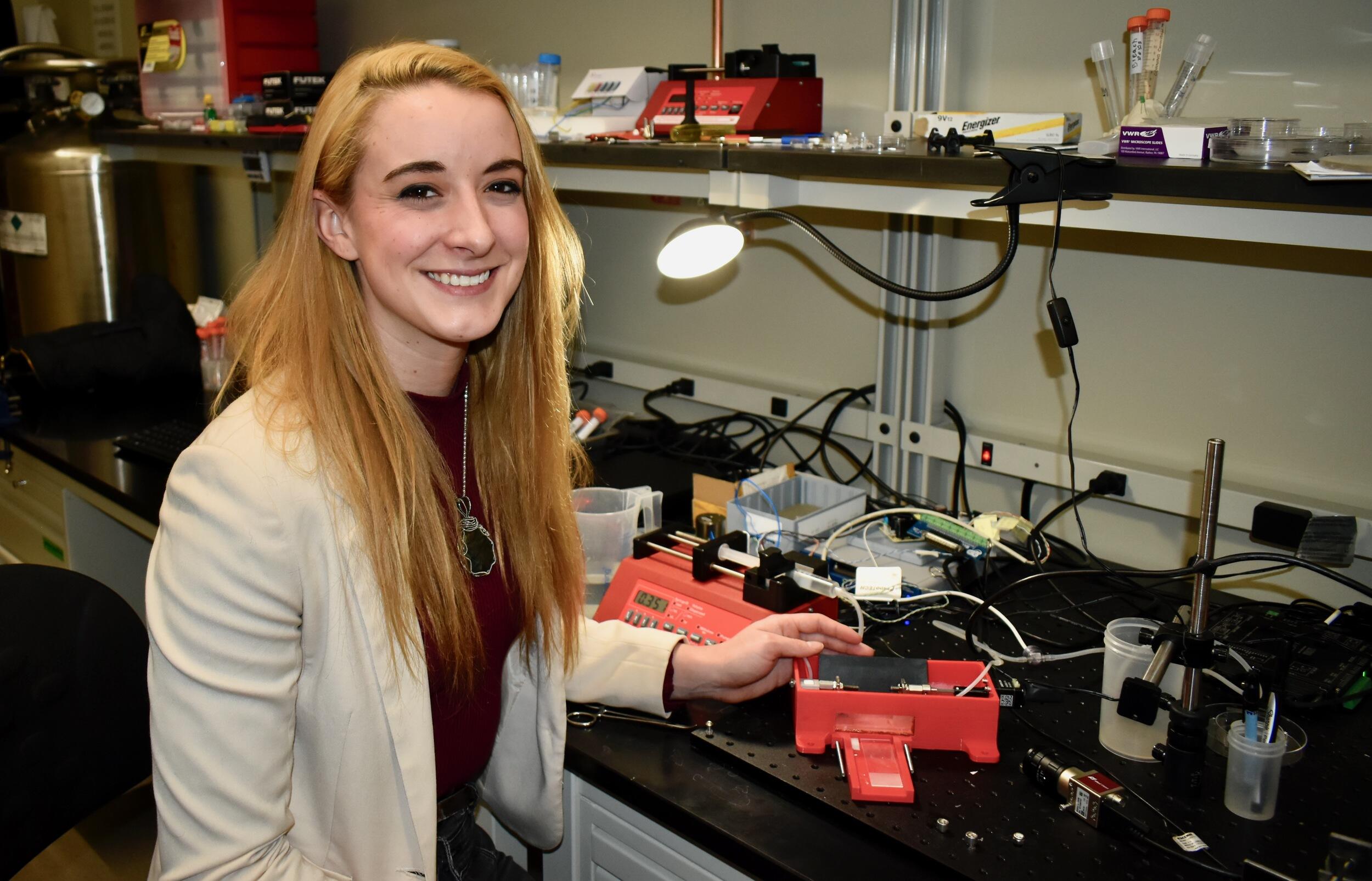
Feb. 24, 2020
A gym for cells: Doctoral student designs mechanical training regimens at the cellular level
Share this story
It’s well known that physical exercise improves heart health. Now Sarah Saunders, a doctoral student in Virginia Commonwealth University’s Department of Mechanical and Nuclear Engineering, is taking that idea down to the cellular level.
Saunders, who holds an undergraduate degree in biomedical engineering from VCU, studies the effects of mechanical forces on the development of engineered tissue.
She recently received an American Heart Association predoctoral fellowship for her ongoing investigations into how mechanically training engineered tissues during incubation can improve the performance of these tissues when they are implanted as grafts. The goal of the research is to advance efforts to engineer living blood vessels for clinical applications such as coronary artery bypass grafting surgery.
Saunders’ work focuses on influencing the mechanical properties of graft tissue by altering the tissue’s microstructure. Extracellular matrix is the network of proteins that cells secrete into their environment to build pathways for communication and mechanical support to form functioning tissues. When external cues are introduced into the cellular environment, cells excrete extracellular matrix differently and form different microstructures of engineered tissue.
Think of it as a gym for cells.
“We know that cyclic training makes cells produce better tissues, like working out in a gym makes muscles larger and stronger,” said Joao S. Soares, Ph.D., assistant professor of mechanical engineering and Saunders’ adviser. “Our goal is to be the cells’ ‘personal trainer.’ We can prescribe optimal training regimens instead of just doing random workouts.”
This is especially important for engineering vascular tissue, which has to be able to stand up to the extra mechanical load of pumping blood while also functioning inside a living, moving body.
“Our goal is to be the cells’ ‘personal trainer.’ We can prescribe optimal training regimens instead of just doing random workouts.”
“One of the ways that you can train cells to lay down more extracellular matrix is by mechanically stimulating them while they are proliferating,” Saunders said. This training also influences the organization of the [extracellular matrix] proteins in the cellular microenvironment, which changes the mechanical properties of the tissue.
“What I’m trying to do is influence the amount of [extracellular matrix] the cells deposit by manipulating different things about their incubation environment,” she said.
But first, Saunders, Soares and other members of the Engineered Tissue Multiscale Mechanics and Modeling Laboratory had to build that environment. The bioreactor they designed for this project is “about the size of a ‘Harry Potter’ book,” Saunders said with a laugh, and can “stretch axially and apply circumferential pressure to the seeded scaffolds in a controlled manner as they grow.”
Soares was not surprised when Saunders received the highly competitive AHA fellowship.
“First, there’s the obvious quality of Sarah’s research, which is perfectly aligned with the goals of the American Heart Association,” he said. “And there’s also the quality of VCU, and the college’s strong connection to the medical school.”
Antonio Abbate, M.D., Ph.D., associate professor in VCU’s Department of Internal Medicine and vice chair of cardiology at the VCU Pauley Heart Center, is a co-sponsor and co-mentor on this study. Saunders and Soares are also collaborating with Stefano Toldo, Ph.D., assistant professor in the Department of Internal Medicine.
This award will allow Saunders to fully “be a researcher” for the next two years, Soares said, without having to also take on the hours required to work as a graduate teaching assistant.
Saunders said she sees research as an integral part of the rest of her career, even though she is not quite sure where that will lead.
“I’m pretty much open to everything. I could see myself in academia or industry,” she said. “But whatever it is, I know that research will be part of it.”
Subscribe to VCU News
Subscribe to VCU News at newsletter.vcu.edu and receive a selection of stories, videos, photos, news clips and event listings in your inbox.










